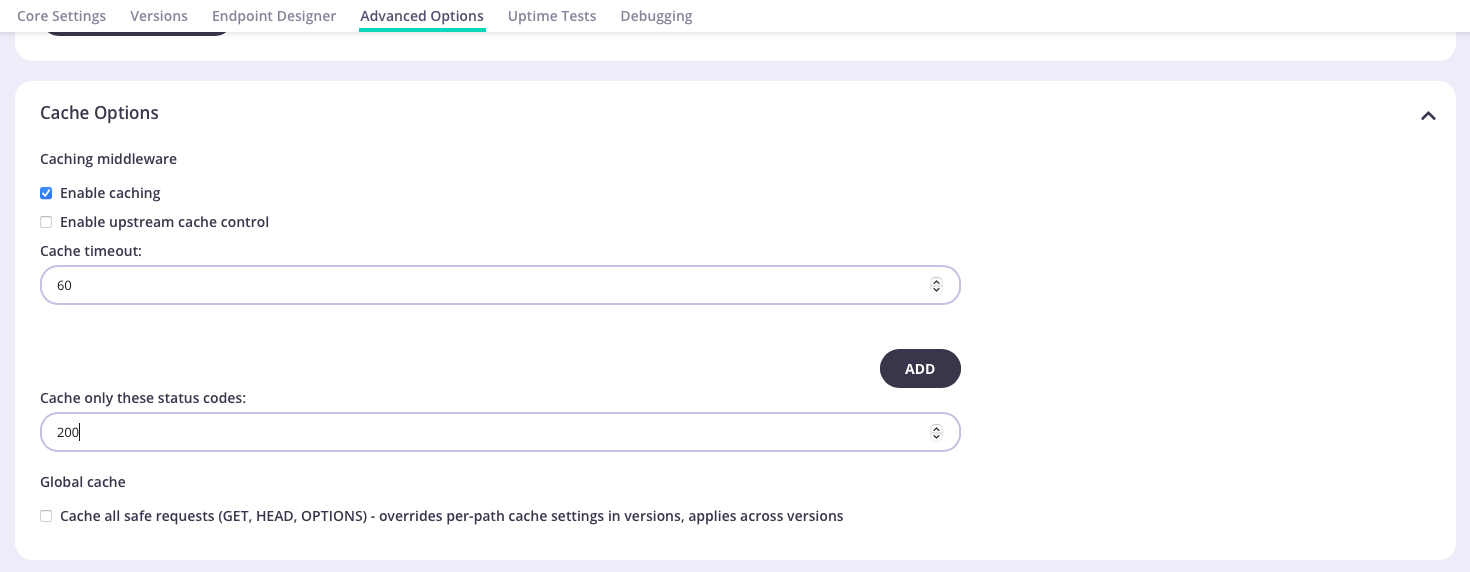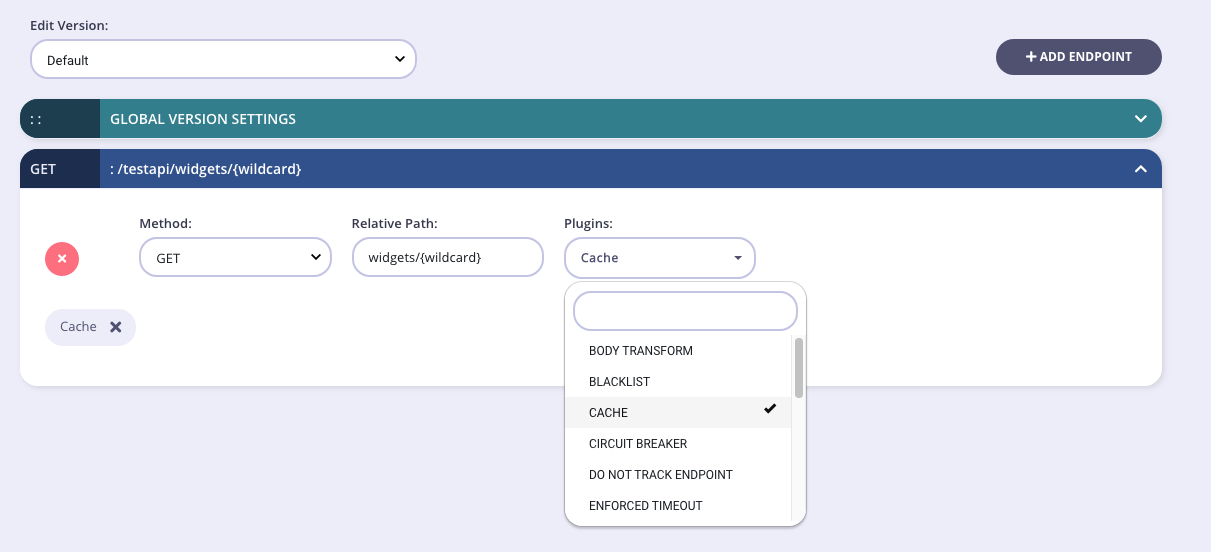Advanced Caching
By default Tyk maintains a cache entry for each combination of request method, request path (endpoint) and API key (if authentication is enabled) for an API.
You can optionally choose to cache more selectively so that only a subset of endpoints within the API will be cached. Alternatively you can cache more granularly so that a separate entry will be created for each response matching different parameters, for example specific header or body content values.
Selective caching by header value
To create a separate cache entry for each response that has a different value in a specific HTTP header you must set the cache_option.cache_by_headers option.
For example, to cache each value in the custom Unique-User-Id header of your API response separately you would set:
"cache_options": {
"cache_by_headers": ["Unique-User-Id"]
}
Note
The cache_by_headers configuration is not currently exposed in the Dashboard UI, so it must be enabled though either the raw API editor or the Dashboard API.
Selective caching by body value
You can configure Tyk’s cache to create a separate cache entry for each response where the request matches a specific combination of method, path and body content.
Body value caching is configured within the extended_paths.advance_cache_config section in your API definition.
The string you provide in cache_key_regex will be compared with the request body and, if there’s a match anywhere in the body, the response will be cached.
For example, to create a cache entry for each response to a POST request to your API’s addBooks endpoint that contains the string my_match_pattern in the body of the request, you would set:
"cache_options": {
"extended_paths": {
"advance_cache_config": [
{
"method":"POST",
"path":"addBooks",
"cache_key_regex": "my_match_pattern"
}
]
}
Note
The advance_cache_config configuration is not currently exposed in the Dashboard UI, so it must be enabled though either the raw API editor or the Dashboard API.
Selective caching by endpoint
By default, if caching is enabled, Tyk will create a separate cache entry for responses returned from every endpoint (path) of your API. This may be unnecessary for your particular API, so Tyk provides a facility to cache only specific endpoint(s). Note that you must disable global (API-wide) caching for selective caching to work, otherwise all safe requests to the API will be cached.
To configure endpoint selective (or per-path) caching, you must:
- ensure that
cache_all_safe_requestsis set tofalse - add a list of the endpoint(s) to be cached in the
cachelist within theextended_pathssection of the API definition
For example, if you want to cache only the /widget, /badger and /fish endpoints of your API you would set the following in the API definition:
"cache_options": {
"enable_cache": true,
"cache_all_safe_requests": false,
"extended_paths": {
"cache": [
"widget",
"badger",
"fish"
]
}
}
Configuring endpoint caching in the Dashboard
In the Tyk Dashboard you can configure caching per endpoint for your APIs by assigning the cache middleware to the desired combinations of endpoint and HTTP method.
Step 1: configure the API level caching options from the Advanced Options tab in the Endpoint Designer as follows
- Enable caching to enable the cache middleware
- Cache timeout to configure the timeout (in seconds) for cached requests
- Cache only these status codes is where you list which HTTP status codes should be cached (remember to click Add after entering a code to add it to the list)
- Cache all safe requests ensure that this is not selected

Step 2: go into the Endpoint Designer tab and for the path(s) you want to cache, select the Cache plugin from the drop-down list.

